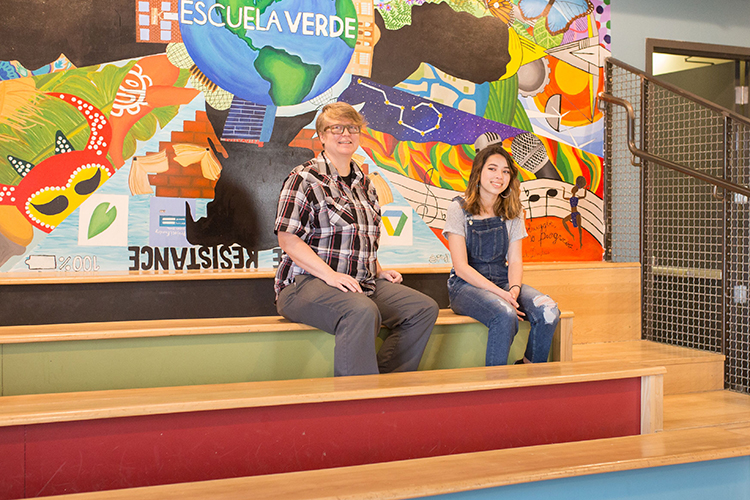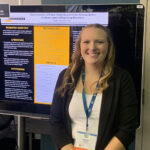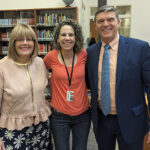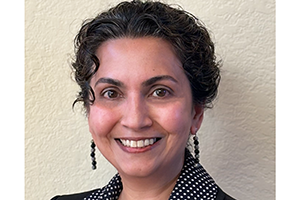When teacher Steve Vande Zande was looking for an innovative, hands-on project for his third-grade students at Hartford University School a few years ago, he turned to the website NEXT.cc and found a multitude of resources around the topic of eyeglasses.
“That was really fun,” Vande Zande recalled. “They had to design a pair of eyeglasses, but we did a whole bunch of research on the history of eyeglasses and why people had them and optics and what our eyeballs do. It was cool stuff.”
And all the information and ideas were free to Vande Zande and his class online at NEXT.cc, which is a kind of Wikipedia for designers.
NEXT.cc is the brainchild of a group of organizations that are working to meld architecture, design and STEAM (science, technology, engineering, arts and mathematics) topics into a useful resource for teachers, students and children all over the world.
Mark Keane, UWM professor of architecture and one of the founders of NEXT.cc, describes it as a digital design education network that offers a variety of informal, e-learning experiences leading to place-based projects.
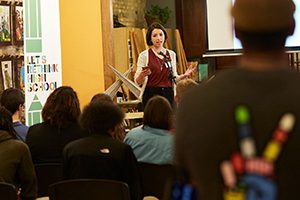
Teachers and students can explore design, language and science areas through interactive curriculum blocks, called journeys. Journeys can range from cereal box design to biofuels, from mass transit to architecture to tessellations (repetitive, interlocking patterns). Each of the hundreds of journeys includes inquiry-based activities, a gallery of projects and links to explore. NEXT.cc introduces virtual field trips, interactive museum presentations and apps about contemporary art, science, design, architecture and environmental practices.
This spring, the husband and wife team of Mark Keane and Linda Keane, a professor in the School of the Art Institute of Chicago, received a national award from the Association of Collegiate Schools of Architecture for exemplary work in building design, community collaborations, scholarships and service. Students from both architecture and design programs are involved in researching and building the site along with K-12 teachers, administrators and educators. UWM and the School of the Art Institute are among the sponsors of NEXT.cc. along with several foundations, museums and the National Endowment for the Arts.
As art, science, technology, design and environment teachers find out about the resource, they are incorporating NEXT.cc into their classrooms.
“NEXT.cc brings together a lot of resources on STEM subjects in a creative and innovative manner,” says Craig Berg, education professor and head of the MACSTEP 2.0 science education program at UWM. He recommends it to aspiring and current teachers. “It can connect topics like land use and energy and other things that are part of the world around us and put all that information into a topic area.”
Vande Zande, now program implementer at Bay View High School, says the ideas he gets from NEXT.cc fit perfectly with the school’s goal of increasing hands-on and entrepreneurial learning in its maker spaces. Students have incorporated ideas on design and ecology from the website into a service learning project, redesigning rain barrels. A project on utopian societies brought in history and English, and a textiles project incorporated geometry.
“I use it as a planning tool, marrying the ideas from the site with the curriculum,” he said.
Joey Zocher, a teacher at Escuela Verde, a charter school, says the ideas and resources on the website fit perfectly with the school’s focus on project-based learning around sustainability and social justice. In fact, the school incorporated some ideas from NEXT.cc and UWM’s School of Architecture and Urban Design as it moved into an existing building on the near south side. For example, old church pews were turned into bleachers for a small auditorium-style seating area just off the school’s lobby.
“It’s a natural for science projects,” Zocher said, and some students, like Diya Noble, a senior, have even created projects that other students can use as a template for their own creative ideas. “It makes it a lot easier to follow your own interests,” said Noble.
Zocher agreed. While following state curriculum guidelines, teachers can also encourage students who are ready for more challenges. “We ask students, ‘what are you interested in?’ and with NEXT.cc we can help them find the resources.” As teachers, Zocher added, “we’ve learned to be more facilitators and guides.”
The organizers of NEXT.cc have spoken to teacher groups at in-service workshops around the country about the site and how to use it in classes, according to Mark Keane. It’s not designed to replace regular classroom content, but to provide new challenges and options for students.
The site keeps evolving– it’s grown from 16 journeys to around 300, and is now up to version 3.0, Keane said. The organizers don’t track under 18 children who use NEXT.cc, but know from Google Analytics that they have followers in 50 states and over 200 countries as far away as China and India.
“Basically, if you can read English, you can use the site to explore systems thinking in the world,” Keane said.
